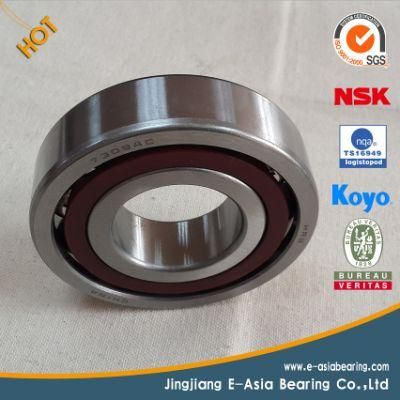
Angular Contact Ball Bearing 7305/7306 Bearing/Bearing 7319/Original NSK/Rhp
Jingjiang E-Asia Bearing Co., Ltd.- Separated:Unseparated
- Load Direction:Thrust Bearing
- Material:Bearing Steel
- Structure:Angular Contact, Angular Contact Ball Bearing
- Aring Type:Ball
- Precision Rating:P0, P6, P5, P4, P2
Base Info
- Model NO.:7305 7306 7308B 7309ACM 7210B 7312AC 7412ACM
- Seals Type:Open
- Clearance:C0, C4, C3
- Rolling Body:Ball Bearings
- The Number of Rows:Single
- Outer Dimension:Small and Medium-Sized (60-115mm)
- Transport Package:Made by Plastic Tube+Anti-Rust Paper+Box+Carton
- Specification:ISO9001
- Trademark:NSK-TIMKEN-OEM-KOYO
- Origin:China Japan Sweden
- HS Code:84821000
- Production Capacity:50000000PCS,Month
Description
Basic Info.
Model NO. 7305 7306 7308B 7309ACM 7210B 7312AC 7412ACM Seals Type Open Clearance C0, C4, C3 Rolling Body Ball Bearings The Number of Rows Single Outer Dimension Small and Medium-Sized (60-115mm) Transport Package Made by Plastic Tube+Anti-Rust Paper+Box+Carton Specification ISO9001 Trademark NSK-TIMKEN-OEM-KOYO Origin China Japan Sweden HS Code 84821000 Production Capacity 50000000PCS/MonthProduct Description
Product DescriptionThe raceways of angular contact ball bearing in the inner and outer rings can have relative displacement on the horizontal axis. Therefore, this design can make it withstand combined loads, namely, supporting radial and axial loads simultaneously. The axial load capacity of angular contact ball bearing improves with the increasing contact angle. The contact angle is defined as the angle between the line joining the points of contact of the ball and the raceways in the radial plane, along which the load is transmitted from one raceway to another, and a line perpendicular to the bearing axis. The retainer is made of brass, synthetic resin of others subject to individual bearing's features and application conditions.
It uses axially asymmetric races. An axial load passes in a straight line through the bearing, whereas a radial load takes an oblique path that tends to want to separate the races axially. So the angle of contact on the inner race is the same as that on the outer race. Angular contact bearings better support "combined loads" (loading in both the radial and axial directions) and the contact angle of the bearing should be matched to the relative proportions of each. The larger the contact angle (typically in the range 10 to 45 degrees), the higher the axial load supported, but the lower the radial load
| BearingNo. | Bore(mm) | O.D.(mm) | Width(mm) | Weight (lbs) |
| 7308 | 40 | 90 | 23 | 1.38 |
| 7309 | 45 | 100 | 25 | 1.85 |
| 7310 | 50 | 110 | 27 | 2.40 |
| 7311 | 55 | 120 | 29 | 3.06 |
| 7312 | 60 | 130 | 31 | 3.84 |
| 7313 | 65 | 140 | 33 | 4.65 |
| 7314 | 70 | 150 | 35 | 5.64 |
| 7315 | 75 | 160 | 37 | 6.77 |
| 7316 | 80 | 170 | 39 | 8.05 |
| 7317 | 85 | 180 | 41 | 9.57 |
| 7318 | 90 | 190 | 43 | 11.2 |
| 7319 | 95 | 200 | 45 | 13.0 |
| 7320 | 100 | 215 | 47 | 15.8 |
| 7321 | 105 | 225 | 49 | 18.1 |
| 7322 | 110 | 240 | 50 | 21.2 |
| 7324 | 120 | 260 | 55 | 32.4 |
| 7326 | 130 | 280 | 58 | 38.8 |
| 7328 | 140 | 300 | 62 | 47.4 |
| 7330 | 150 | 320 | 65 | 55.3 |
| 7332 | 160 | 340 | 68 | 65.7 |
| 7334 | 170 | 360 | 72 | 77.8 |
| 7336 | 180 | 380 | 75 | 90.2 |
| 7338 | 190 | 400 | 78 | 104 |
| 7340 | 200 | 420 | 80 | 117 |
| 7000C | 10 | 26 | 8 | 0.042 |
